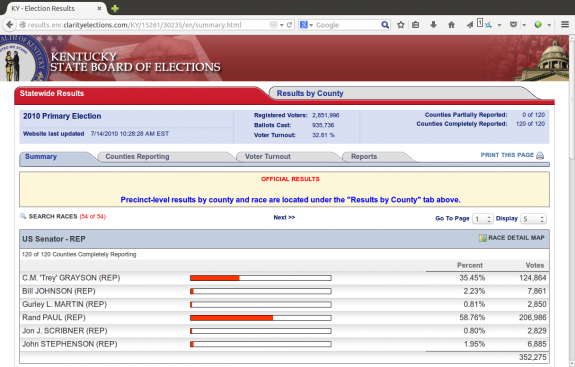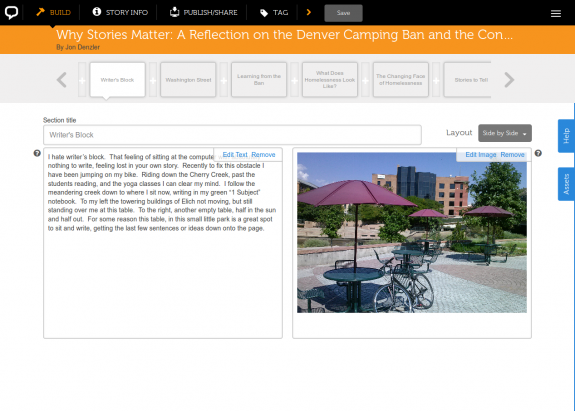This was originally posted on the Local Fourth blog as part of my participation in a community media innovation project at the Medill School of Journalism.
I’m finding the word community increasingly confusing, especially when navigating the world of hyperlocal publishing. When someone says community, do they mean community like the city of Evanston, or the city’s West Side neighborhood, or a block club or church. Or, do they mean the community of users of a particular site? When do these groups intersect, when are they too disparate? The 2010 Knight News Challenge goes as far as defining a specific Community category for entries:
Community: Seeks groundbreaking technologies that support news and
information specifically within defined geographic areas. This is designed to
jump-start work on technologies and approaches that haven’t arrived yet.
Unlike the first three categories, sub-
missions in this area must be tested in a geographically designated community.
But, in a Sept. 20 post announcing the 2010 challenge, the poster wrote “I think of this as our io9 category,” referring to a Gawker Media-run science-fiction and popular culture site. Perhaps the poster was referring to the future-focused voice of the site, but it also surfaces the possibility that people may increasingly identify with communities and person-to-person interactions that aren’t geographically bound.
In looking at strong, geographically disparate online communities, groups of people engaging around free/libre/opensource software, or FLOSS projects are one of the most compelling. While they can exhibit the same segregation or bickering of physical communities, they can also be a model for people coming together to build something that serves a clear need. The way in which many projects are firmly grounded in utility and the way in which similar projects seem to sustain themselves not by competing but by understanding how their project does a job that’s different than other software is a lesson that media organizations, particularly in the hyperlocal space, would do well to learn.
FLOSS projects also complicate traditional notions of sustainability. While many projects have found ways to sustain themselves financially, either through donations, sponsorship or by incredible use of volunteer time coding, documenting and providing help and training for the project, FLOSS projects tend to put utility ahead of commercial viability. Making technology that serves a need and remains relevant and responsive to changing needs and to feedback from users is as important to the sustainability of the project as the dollars and cents.
We make use of a lot of FLOSS for implementing the technological part of the innovation project. While there are lots of ways that we could give back for this technology that is so useful us as developers (Palintir, a Chicago-based web development shop that specializes in sites based on the Drupal content management system, for instance, contributes code that they use to develop new features for their clients back to the larger Drupal community), the tight time constraints of graduate school and a rapid project mean that dollars are the best way that I can give back to these projects.
Even though most of the tools that I use to make technology are available free of cost, paying something for them helps me think of how I value the tools for this project. I’ve decided to donate the amount of money that I spend each week on a common indulgence during this project, going out for lunch with other team members, to some of the FLOSS tools that I’ve used the most in the last few weeks.
Python – most of the code in this project is written in this language. It’s flexible, easy to learn, has a large number of useful contributed libraries and is very readable making it easy to understand someone else’s code. Donate to the Python Software Foundation.
jQuery – If the back end of the project is written in Python, the front end is highly dependent on the jQuery javascript framework. JQuery makes it easier to implement some of the rich user interactions that people have come to expect on the web. Donate to the jQuery project.
Django – Django is a Python web framework that has its roots in the newsroom. . The first time I used the framework, I was amazed at how it streamlined the most tedious aspects of web development. When I’m curious about how to do something in the framework, I often discover that there’s an elegant approach provided in the framework along with clear documentation. Donate to the Django Software Foundation.
Vim – I was compelled to learn to use this editor when I started at my first tech job at a regional Internet service provider. The network administrator said that it was important to learn vi (Vim, an enhanced version of the classic UNIX editor, stands for vi improved) because you could be assured that it would be available on any UNIX system that you found yourself poking around. While the navigation of the program, which is keystroke heavy, seemed unintuitive at first, once I got used to it, the lightweight but highly customizable and extensible editor felt like it was designed just for me. Rather than asking for donations to sustain the project, Vim’s lead developer solicits donations for a charity that supports children in Uganda.
Firebug – I don’t know how I wrote programs for the web before Firebug. This Firefox extension helps me understand and tweak the HTML and CSS of a design and also see what is going on behind the scenes with Javascript errors and AJAX requests. Donate to the Firebug project.





